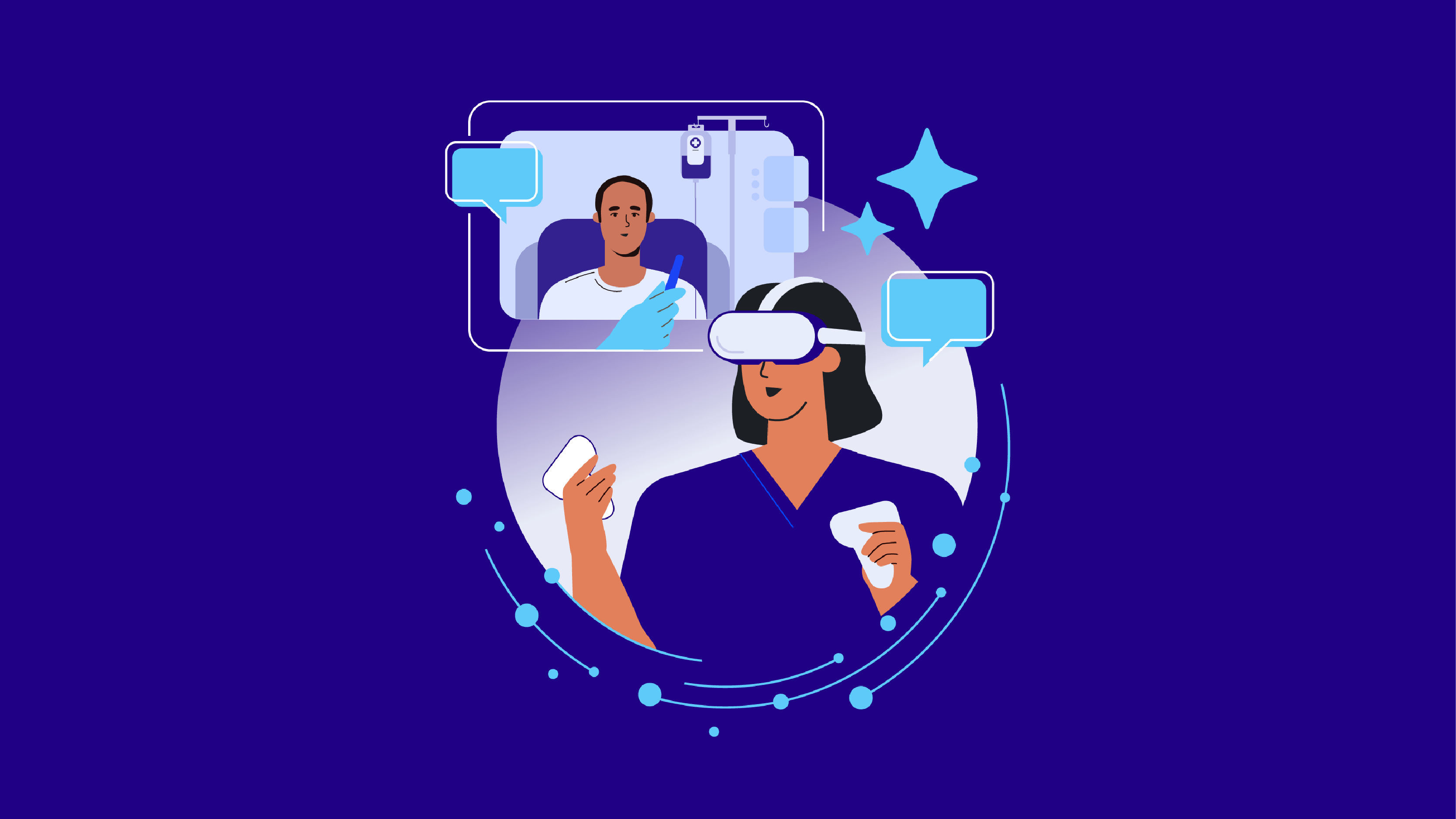What Is High Acuity Nursing & How Can Nurses Train for These Scenarios?
.jpeg)
Table of Contents
Name of the heading
1- Start your table with the syntax {start-table}
2 - Add an H3 Heading to create a new column (this will be the column title)
3 - List cells as bullet points in a List element
4 - End your table with the syntax {end-table}
The beeping of monitors, rapid medical discussions, and the urgency of split-second decisions - welcome to a day in the life of a high acuity nurse. But how does one prepare for such demanding scenarios?
It requires education, licensing and certifications such as the Next Gen NCLEX, continuous learning such as with tools like immersive virtual reality, attending professional development opportunities, as well as gaining specialized experiences.
High Acuity Nursing: Focusing on Patients with Severe, Life-threatening Illnesses or Injuries
High acuity nursing is a specialized field within the nursing profession that centers on providing care to patients facing severe, often life-threatening conditions. Unlike general nurses who manage the overall health and well-being of patients, high acuity nurses operate in high-stakes environments where patients' conditions can change rapidly, and decisions must often be made in split seconds.
Training Pathway for High Acuity Nurses
For those aspiring to become experts in the care of critically ill patients, the journey to becoming a high acuity nurse is marked by rigorous training, hands-on experience, and continuous professional development. Here's a detailed look into the steps involved in this pathway:
1. Basic Educational Requirements
While starting with an ADN can get one into the nursing profession, many hospitals and healthcare institutions prefer candidates with a BSN, especially for advanced roles. A BSN program delves deeper into the complexities of patient care, leadership, and research methods, offering more comprehensive training and, consequently, more opportunities in the nursing field.
2. Licensing and Certification
Passing the Next Gen NCLEX:
After completing the necessary educational prerequisites, aspiring nurses must pass the National Council Licensure Examination for Registered Nurses (Next Gen NCLEX). This exam tests the knowledge, skills, and abilities essential for RNs and LPNs.
Pursuing Certifications Specific to Critical Care Nursing:
Beyond the basic RN license, nurses aiming to specialize in high acuity nursing can seek certifications tailored to critical care. One such renowned certification is the CCRN (Critical Care Registered Nurse) certification. Achieving this signifies expertise in caring for acutely/critically ill patients and showcases commitment to the specialization.
3. Continuous Learning & Professional Development
Pursuing Immersive Virtual Reality (VR) Training
Immersive VR can be used by nursing students or nurses to sharpen their skills in high acuity scenarios. It offers an opportunity to practice in specific scenarios that they might not otherwise have immediate access to in a safe way.
UbiSim is an immersive virtual reality platform created just for nurses with scenarios created by nurse educators. Hospitals or educators can craft and customize scenarios to meet their needs with UbiSim’s intuitive Editor.
UbiSim has quite a few scenarios that fall under the “high acuity” category, here are two:
- Jadyn Turner - Diabetes-Related Ketoacidosis (DKA): Will require pediatric ICU-level care for close monitoring with the IV drug needed.
- Sharif Amari - Myocardial Infarction: This is a very acute situation (heart attack) in which a nurse would need to act quickly and efficiently.
Learn more about UbiSim by scheduling a demo!
Regularly Attending Workshops, Seminars, and Conferences:
Engaging in professional development opportunities like workshops, seminars, and conferences not only offers learning but also provides a platform to network with peers, share experiences, and discuss challenges and innovations in the field.
4. Specialized Experience
Working in General Medical/Surgical Units:
Before diving into high acuity settings, it's beneficial for nurses to gain experience in general medical or surgical units. This foundational experience helps them understand the broader aspects of patient care and hospital dynamics.
Gaining Hands-on Experience in ICUs or Other High Acuity Settings:
Theory and coursework lay the groundwork, but mastering high acuity nursing truly happens with hands-on experience. Working directly in Intensive Care Units (ICUs) or similar high acuity settings allows nurses to apply their knowledge, develop their skills, and grow in their role under the mentorship of seasoned professionals.
Conclusion
The path to becoming a high acuity nurse is undeniably challenging, but it's also worthwhile for those who pursue this path. Through immersive training tools, specialized certifications, and continuous professional development, we're empowering the next generation of nurses to be at the forefront of critical care, ready to make a difference when it matters the most.
FAQs
Heading 1
Heading 2
Heading 3
Heading 4
Heading 5
Heading 6
Lorem ipsum dolor sit amet, consectetur adipiscing elit, sed do eiusmod tempor incididunt ut labore et dolore magna aliqua. Ut enim ad minim veniam, quis nostrud exercitation ullamco laboris nisi ut aliquip ex ea commodo consequat. Duis aute irure dolor in reprehenderit in voluptate velit esse cillum dolore eu fugiat nulla pariatur.
Block quote
Ordered list
- Item 1
- Item 2
- Item 3
Unordered list
- Item A
- Item B
- Item C
Bold text
Emphasis
Superscript
Subscript
Explore more

From 30 Minutes to 3: How AI Enhanced Analytics Transforms Debriefing Preparation
AI Enhanced Analytics: Scenario Performance Data now available in UbiSim's Version 1.19
.jpg)
Behind the Scenes: How We Brought Incisions & Dressings to Life in VR
How the UbiSim team built a VR system displaying 300+ distinct incision states—balancing clinical accuracy, technical constraints, and nursing education needs.
.jpg)
Step Inside the Room of Errors: Playful Exploration, Serious Skills
Learn how UbiSim's Room of Errors transforms nurse training through investigative play. Students spot hidden safety risks and build situational awareness.




